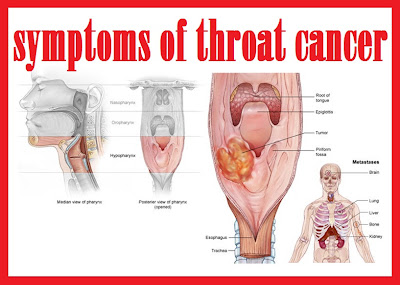treatment for throat cancer
Throat Cancer Treatment & Therapy Options
At Cancer Treatment Centers of America (CTCA), surgery is the preferred treatment for early-stage throat cancers. The throat is comprised of the pharynx and the larynx.
For advanced stage or recurrent throat cancer, we may combine surgery with other forms of treatment, such as radiation therapy and chemotherapy. These treatments may be used to shrink the tumor before surgery. Nearby lymph nodes may also be removed during surgery to test for the presence of cancer.
Surgical Procedures for Pharyngeal Cancer
Vocal Cord Stripping: With this technique, a long surgical instrument is used to remove the outer layers of tissue on the vocal cords. This approach may be used for a biopsy, or to treat some stage 0 cancers confined to the vocal cords. Vocal cord stripping rarely impacts speech after the operation.
Laser Surgery: In laser surgery, an endoscope with a high-intensity laser on the tip is inserted down the throat. The tumor can then be vaporized or cut out using the laser.
Cordectomy: In a cordectomy, part or all of the vocal cords are removed. This approach may be used to treat glottic cancer that is very small or located only on the surface tissues. Patients who receive a cordectomy may experience changes in speech. Removing part of a vocal cord may lead to a hoarse voice. If both vocal cords are removed, speech would no longer be possible.
Laryngectomy: An operation in which part or all of the larynx is removed.
Partial Laryngectomy: For small laryngeal cancers, it may be possible to remove only the portion of the voice box where the cancer exists, leaving the rest of the larynx intact. A partial laryngectomy may be used to remove the portion of the larynx above the vocal cords (supraglottic laryngectomy), or only one of the two vocal cords (hemilaryngectomy).
Total Laryngectomy: For more extensive laryngeal cancers, sometimes a total laryngectomy may be the recommended treatment. With this procedure, the entire voice box is removed. Then, in a process known as a tracheostomy, the windpipe is surgically moved toward a hole in the neck for breathing. For patients who follow this treatment option, normal speech is no longer possible, but other forms of speech can be learned. Foods and liquids can be swallowed normally, just as they were before the procedure.
Pharyngectomy: An operation in which part or all of the throat is removed.
Reconstructive Procedures: Following extensive surgery to remove throat cancer, reconstructive operations can help restore both the structure and the function of the affected areas.
Myocutaneous Flaps: The throat is reconstructed using muscle and skin from a nearby area that is rotated toward the throat.
Free Flaps: Using “microvascular surgery,” in which small blood vessels are sewn together under a microscope, it may be possible to reconstruct the throat using tissues from other areas of the body, such as the intestines or arm muscle.
Lymph Node Removal: Cancer of the throat sometimes spreads to the lymph nodes in the neck. If such spreading seems likely, then removing the lymph nodes might be recommended. This operation is called a neck dissection, and is usually done at the same time as surgery to remove an already existing tumor. The exact amount of tissue that needs to be removed depends on the stage of cancer. With the most invasive procedure, some nerves and muscles that control neck and shoulder movement may be removed with the lymph nodes. However, many times surgery of this kind does not need to involve as much of the healthy tissue, preserving the normal function of the shoulders and neck.
Tracheotomy/Tracheostomy: A tracheotomy is done to create an alternate pathway for breathing by creating a hole, or stoma, in the trachea, or windpipe. There are different situations when a tracheotomy may be needed. After a total laryngectomy, the opening in the windpipe is connected with an opening in the front of the neck to provide a new route for breathing. This permanent procedure is known as a tracheostomy.
Gastrostomy Tube: A gastrostomy tube is a feeding tube that can be inserted directly into the stomach. This approach may be recommended if a cancer in the pharynx is preventing swallowing. A gastrostomy tube can ensure that an individual is getting adequate nutrition.
A feeding tube can also be placed in the stomach through the mouth. With this process, known as a percutaneous endoscopic gastrostomy, or PEG, a camera is attached to the end of a long, thin tube, allowing your doctor to see directly into the stomach. Special liquid nutrients can be provided through the tube.
These tubes may be inserted on a short-term or long-term basis. They can help keep you healthy and fed during treatment, and can be left in after treatment if necessary. The tube can be easily removed as soon as normal eating is possible.




